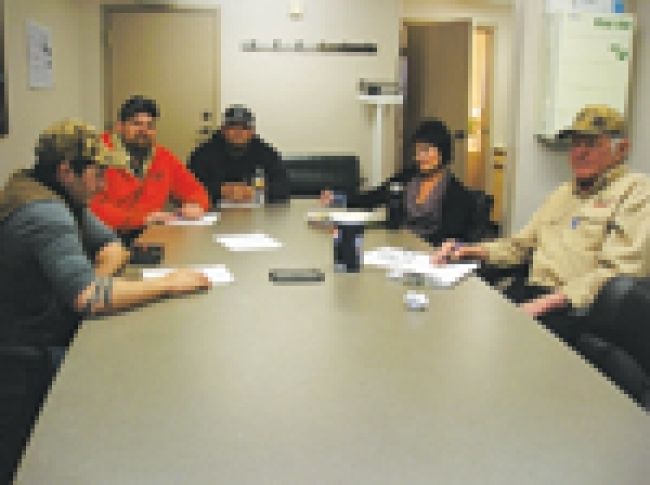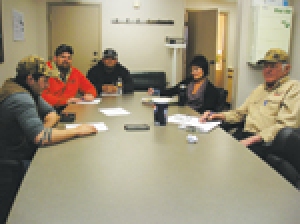
Behavior Safety Training for Safety Committee Members

Industries concerned about bottom-line expenses tend to place behavior safety training low on the priority list. However, consider the direct costs your company paid for incidents, accidents, injuries, lost time, lost productivity, and damage to equipment or facilities during the past year. This article will outline a training program that can create significant safety advances as well as immeasurable returns on safe work practices.
The Role of Safety Committees
In the United States, most companies have safety committees comprised of employee volunteers. These individuals play a significant role in reviewing safety situations, discussing procedures, identifying potential safety hazards and recommending changes to improve safety practices. They provide an invaluable service to the company and the fellow employees they represent.
Although safety committees don’t need another item to add to their list of duties, it is important to note that individuals serving on these committees are significantly positioned, directly or indirectly, to influence the work behavior practices of their colleagues. Applying behavior skills to their solutions and recommendations will add value and employee application techniques to their findings. The addition of behavior safety will elevate information to an awareness level, add understanding and a safe plan of action, and directly improve safe work behavior practices.
Not Just a Fad
Most employees serving on safety committees bring to the table work skills based on their training and experiences. These skills qualify them to engage in the tasks they take on. Adding behavior components will provide another level of expertise for their efforts. When this level is achieved, behavior safety training becomes an asset for expanding personal skills and enhancing their mentoring abilities with co-workers.
Behavior safety in the eyes of some safety professionals is still viewed as a fad. They feel that most behavior is not cognitive. If this is true, then people must make mistakes when they are sleeping. Once, when I confronted someone about these thoughts, I was accused of presenting psychobabble. I was told, “You can’t train people to avoid all mistakes.” I agree with that statement, except I believe employees can be trained to evaluate what they are thinking, raise their awareness and then actively decide on actions that are safest to apply.
Getting employees to ask questions before they begin a task to raise their awareness is another simple skill that can be taught. My naysayer again challenged me: “Sure, you can train them to ask a question, but they won’t do it every time on every task they have to do.” He was right again. I know I can’t get them to do it every time. But if safety committee members are involved with supporting and training their fellow colleagues to implement behavior safety techniques, do you suppose it will make a difference? For the better part of my professional career, I’ve measured, experienced and successfully utilized behavior techniques that have made a difference. I stand as a true believer in this process.
A Complete Alliance
Behavior safety training for safety committee members needs to be designed to complement current safety programs. A safety program – the rules, regulations and policies – supported with safety engineering and behavior safety forms a complete alliance. Behavior safety adds to safety compliance by including three components: involvement by all employees including those at the management and administrative levels; responsibility through making safety a personal commitment; and achievement – measuring results for evaluating, continuing and bringing success to an emerging process.
A strong behavior training program will include the goal of increasing the effectiveness and contribution potential trainees bring to the process. This starts with their current knowledge and adds the following types of activities:
• Developing, assessing and understanding each committee member’s role in contributing to employee behavior safety skills.
• Determining and outlining boundaries, primary duties and expectations as related to behavior safety skills training.
• Exploring ideas for improving safe work practices and behaviors.
• Conducting surveys, questionnaires, and other forms of evaluation techniques to keep the process significant and progressive.
• Offering new ideas and program development for continuous improvement.
Although the training of safety committee members is a new concept currently being promoted, following is an example of a program that has similar characteristics. I had the good fortune of being involved with this program from the onset. A company agreed to establish a cadre of employees they called safety coaches. These were individuals selected to represent their units and serve as advocates to communicate current safety issues to their co-workers. The safety coaches received additional behavior safety training to augment their work skills. They were set up in teams according to their shift schedules and met once a month to discuss safety issues pertaining to their units and the facility as a whole. During major turnarounds, they were utilized as observers supporting the company safety team. They were tremendous aids to contractor groups new to the facility. The safety coaches provided feedback and answered questions asked by other employees and contractors about potential safety hazards, especially related to unfamiliar conditions or events.
Expansion and Recognition
Behavior safety training for safety committee members will provide them with skills to expand their expertise and understanding of safe behavior practices. Self-coaching skills are a major part of the behavior safety process I teach to employees. These skills advocate for acceptance and adoption of a primary objective: for employees to take personal responsibility for their safe work behaviors. With safety committee members teaching these skills and projecting the safety message to their co-workers, an on-site training force is created to perpetuate these concepts on a continuous basis.
Recognition may be deficient for the role safety committee members play in effectively influencing the safety process within a company. Professional certification is one way to support, encourage and help safety leaders gain acknowledgement as experts from their peers. The Certified Behavior Safety Specialist (CBSS) program is a three-day training that assists in this process. Training provides CBSS candidates with specific behavior safety skills, techniques and designs for enhancing safe work practices. The CBSS training concludes with a certificate acknowledging the new level of expertise attained by participants.
The contributions safety committee members make to their companies are many and varied. It is highly recommended that you find ways to highlight their contributions. Recognizing their contributions and improving their levels of expertise will enhance their efforts to influence and improve the organization’s safety performance. As mentors to their colleagues, they provide a valuable service that is immeasurable in dollars. The cost of their training will certainly be a lot less and will considerably reduce direct costs the company pays for incidents, accidents, injuries, lost time, lost productivity, and damage to equipment or facilities.
About the Author: Michael S. Haro, Ph.D., CBSS, is president of the Self Coaching Center in Reno, Nev. He delivers self-coaching behavior safety training to the industry and is a frequent iP Safety Conference & Expo presenter.

